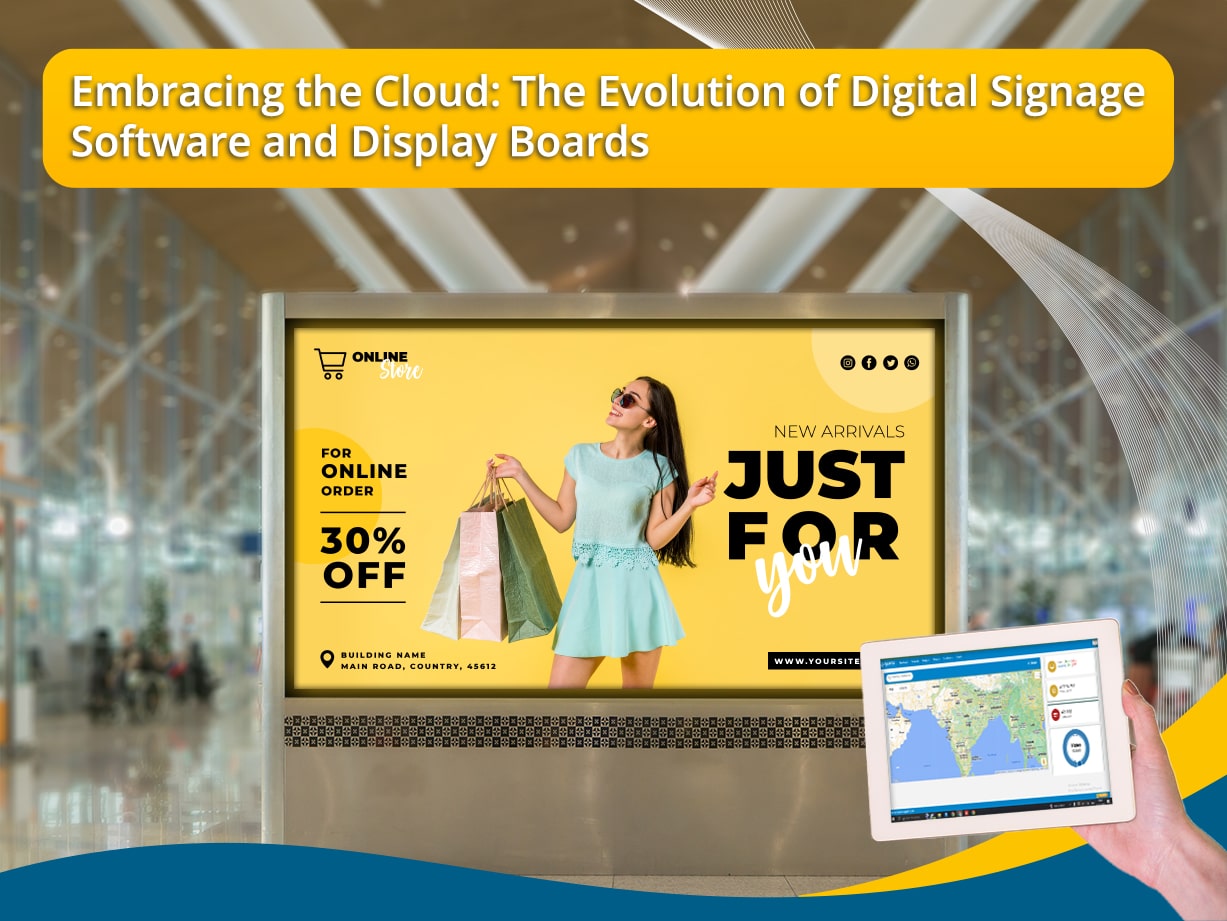In today’s fast-paced world, communication and information dissemination are vital for businesses, educational institutions, public spaces, and various industries. Traditional static displays are no longer sufficient to engage audiences effectively. As a result, digital signage has emerged as a powerful tool to captivate viewers with dynamic and interactive content. With advancements in technology, cloud-based digital signage software has revolutionized the industry, offering unparalleled flexibility, scalability, and convenience. This blog explores the evolution of cloud digital signage software and its impact on modern display board solutions.
The Rise of Digital Signage
Traditional static signage lacks the versatility and impact needed to attract and retain the attention of modern audiences. As businesses recognized the value of captivating displays, digital signage solutions gained popularity. Initially, these systems were on-premises, requiring physical media players connected to individual displays, limiting the scope and flexibility of content management.
Introduction to Cloud Digital Signage Software
Cloud-based digital signage disrupted the industry by introducing a more scalable and accessible approach. Instead of relying on local servers and hardware, cloud digital signage software leverages the power of the internet to manage content remotely. This advancement allowed businesses to centralize content management, schedule updates, and monitor displays from anywhere with an internet connection.
Key Features of Cloud Digital Signage Software
a. Content Management: Cloud digital signage software offers intuitive web-based interfaces, allowing users to upload, schedule, and organize multimedia content effortlessly. From videos, images, to interactive applications, managing content becomes a seamless process.
b. Real-time Updates: With cloud-based solutions, businesses can instantly update content across multiple displays, ensuring timely and relevant information dissemination.
c. Scalability: Cloud digital signage easily accommodates expanding networks of displays without the need for additional hardware, making it suitable for businesses of all sizes.
d. Remote Monitoring and Analytics: Cloud-based solutions provide real-time analytics and monitoring capabilities, enabling businesses to gauge the effectiveness of their content and make data-driven decisions.
e. Customization: Users can personalize content based on location, audience demographics, and time of day, tailoring the experience to specific target groups.
Benefits of Cloud Digital Signage Software
a. Cost-Effectiveness: Cloud-based solutions eliminate the need for expensive on-premises hardware and maintenance costs, resulting in more cost-effective and budget-friendly deployments.
b. Flexibility and Agility: Cloud digital signage allows businesses to respond quickly to changing marketing trends, seasonal campaigns, or urgent announcements with immediate content updates.
c. Accessibility and Remote Management: Users can access the platform from any device with an internet connection, simplifying content management and reducing the need for physical presence on-site.
d. Enhanced Engagement: Interactive and dynamic content captures viewers’ attention, increasing engagement and improving the overall viewer experience.
e. Centralized Control: With cloud-based solutions, businesses can manage multiple displays across different locations from a single, centralized dashboard.
Use Cases for Cloud Digital Signage
a. Retail and Advertising: Retailers leverage cloud digital signage to promote products, deliver targeted advertisements, and create immersive shopping experiences.
b. Corporate Communications: Businesses utilize digital displays in office spaces to share company updates, events, and employee communications effectively.
c. Education Sector: Cloud digital signage in educational institutions aids in disseminating information, schedules, and important announcements across campuses.
d. Hospitality Industry: Hotels and restaurants use cloud digital signage to showcase amenities, menus, and promotions to enhance guest experiences.
e. Transportation and Public Spaces: Airports, train stations, and public venues employ digital signage for wayfinding, announcements, and advertising opportunities.
Advancements in Display Board Technology
While cloud digital signage software drives the content management aspect, the physical display boards have also undergone significant advancements. High-resolution displays, LED technology, and interactive touchscreens have transformed the way information is presented and consumed.
The Future of Cloud Digital Signage Software
As technology continues to evolve, cloud digital signage is expected to grow even more sophisticated. Artificial intelligence, augmented reality, and data-driven content will likely play essential roles in enhancing viewer engagement and personalization.
Conclusion
The cloud digital signage revolution has forever changed the way businesses and institutions communicate with their audiences. The flexibility, cost-effectiveness, and scalability of cloud-based solutions have made them indispensable tools for various industries. Coupled with advancements in display board technology, digital signage offers a dynamic, interactive, and immersive experience for viewers. As technology continues to advance, the future of cloud digital signage holds immense promise, empowering businesses and institutions to stay at the forefront of communication and information dissemination.
Wish to start now? It is never too late. Get in touch with our experts at Sparsa Digital and embark on an exciting journey today. Get customized solutions as per your needs and requirements, without even burning a hole in your pocket. Connect with us now!

